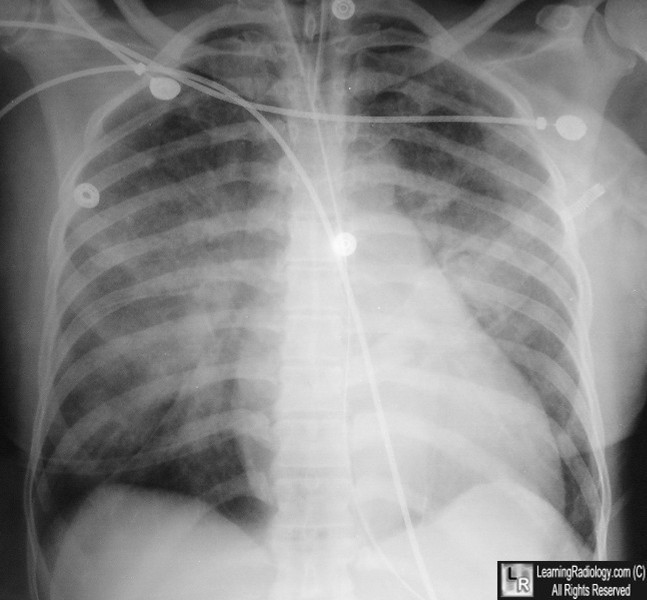|
|
Crack Cocaine Abuse
-
“Crack” or “rock” is prepared by mixing cocaine
hydrochloride, which is the preparation usually available on the street,
with an alkaline solution such as baking soda.
-
The mixture may be heated
directly until it vaporizes, but this form contains impurities.
-
Freebase
cocaine can
be prepared by adding a solvent, such as ether, to the mixture.
-
The mixture separates into two layers with the top layer
containing freebase cocaine dissolved in the solvent.
-
The solvent layer is
then separated either by filter or, less commonly today, by evaporating it at
low temperatures to leave pure alkaloid cocaine crystals.
-
The product is then
smoked.
Clinical
Imaging
-
Non-cardiogenic
pulmonary edema (“increased permeability”)
-
Most
likely 2° to damage to capillary membrane, either by
-
Bronchiolitis
obliterans with organizing pneumonia (BOOP)
-
Pulmonary
infiltrates with eosinophilia
-
Pulmonary
hemorrhage
-
Diffuse
Interstitial Pneumonia
-
Pneumothorax
-
Pneumoperitoneum

Non-cardiogenic Pulmonary Edema from Crack Cocaine Use. There is bilateral, central airspace disease in a perihilar distribution with no pleural effusions or fluid in the fissures. The pattern is consistent with non-cardiogenic pulmonary edema.
|
|
|